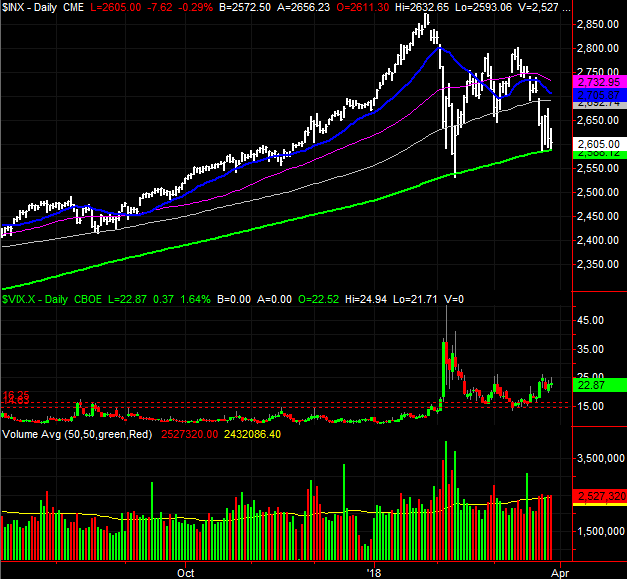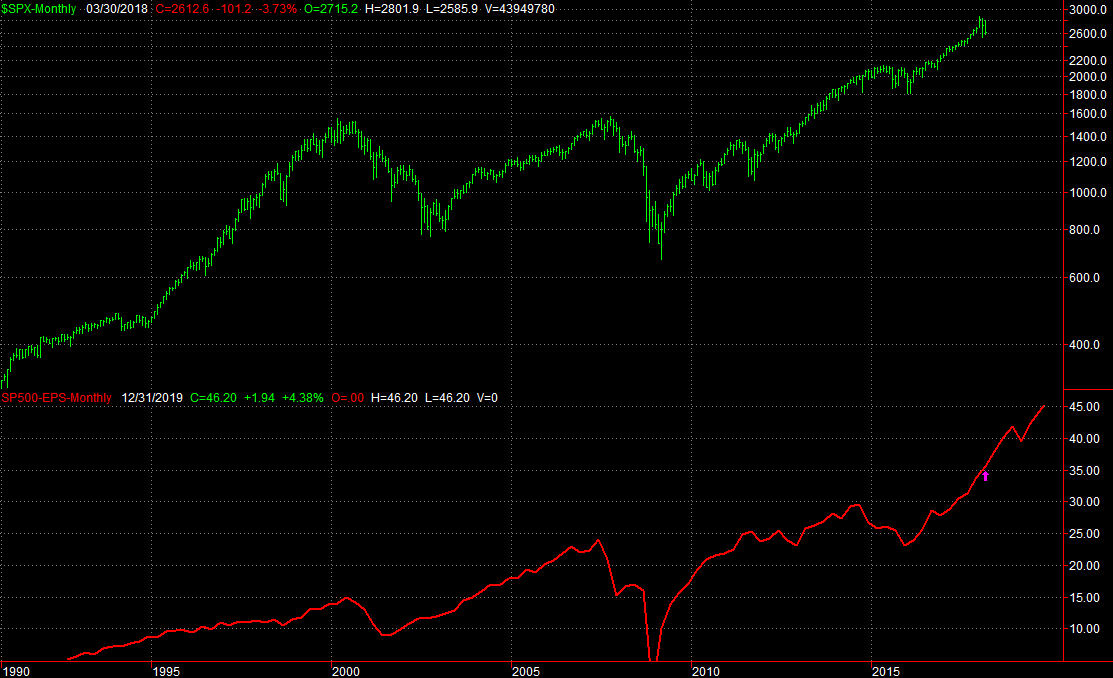The One Thing Bear Market, Recession Worriers are Forgetting

If you're reading this, then odds are good you've already heard some of the chatter about a looming bear market, brought on by an economic recession. Between a flattening yield curve and an impending trade war, the usual doom-and-gloom crowd is having a field day by spooking people. Some experts are already asking if a bear market is here... and they're not doing so in jest (especially now that the S&P 500 is at risk of breaking below its 200-day moving average line).
That's fine. There's never anything wrong with being aware of all possibilities, even if some of them are only remote possibilities.
It's time to face a reality check though: All these fear-inducing calls are being trotted out and touted not so much because anybody really thinks the end is nigh. Rather, they're being batted around by the media because, like sex, fear sells. It draws eyeballs in, and keeps investors glued to their screens.
How do we know a recession (and therefore a bear market) is an extremely unlikely outcome in the foreseeable future? Because, the broad market's earnings have been, are, and should continue to be on the rise.
The graphic below tells the tale, plotting the S&P 500 in comparison to its earnings going back about three decades. Though a close inspection suggests that we won't actually see stocks start to slide unless earnings begin to sink, an even closer look reveals that earnings actually start to slump just before stocks do... suggesting investors don't really expect a recession-driven bear market to begin until it becomes undeniable, with numbers. The pink arrow, by the way, is where we are right now, pointing to Q1's estimated earnings per share for the S&P 500.
There's no need to dance around the issue that the market has a valuation problem. With Q4's earnings in hand, the index is trading at 21 times its trailing earnings. That's rich, though we've seen frothier. On a forward-looking basis the S&P 500 is valued at a more palatable 16.7, which is almost a 'normal' projected P/E.
And, for the record, not counting the energy sector's still-sky-high valuations - with the 2014/2015 rout continuing to crimp bottom lines - the average P/E is still closer to 19 on a trailing basis, and only about 16 on a forward-looking basis.
Might earnings somehow implode, unexpectedly? Sure. Anything's possible. Analysts certainly don't have a perfect track record when it comes to predicting recessions.
On the other hand, in light of the fact that they missed the 2000 meltdown and missed the 2008 meltdown as well, a wide swath of these professional forecasters are so unwilling to miss yet another one that they're calling for one that isn't really on the radar. They're getting nervous just about the sheer length of this growth phase, without respecting the fact that this economic expansion was unlike any other in the past. Jobs slowly came back, but wages didn't really recover in step. Interest rates were suppressed to abnormally low levels, because they had to be, but they have to be right-priced sooner or later. That's why the yield curve is relatively flat; it's not a barometer of economic health here. In fact, you could almost call the 2015 lull, courtesy of the oil meltdown, a mini-recession that still hit the overall economy's "reset" button, paving the way for a long-lived growth cycle.
The unfortunate irony is that the earnings reality check laid out above will go ignored by most, with the S&P 500 on the verge of breaking below its pivotal 200-day moving average line... for the first time since June of 2016.
It's not that big of a deal. The S&P 500 is currently less than 10% below its January peak. It looks and feels like a lot, but that's not even the typically-sized corrective move. The index could easily break below the 200-day moving average line (green) and still not retreat all the way to the 20% drawdown level that technically constitutes a bear market.
That's what happens with the market rallies more than 50% in about two years, with no major interruptions along the way. All those potential interruptions accumulate, and are unleashed in one fell swoop... kind of like they're being unleashed now.
The point is, while you absolutely need to be aware that a tumble under the 200-day moving average line is likely to incite plenty of panic and more selling, don't confuse that with a recession. Earnings are still growing nicely. It's valuations that need to be adjusted. That's all this really is, despite the chatter.

